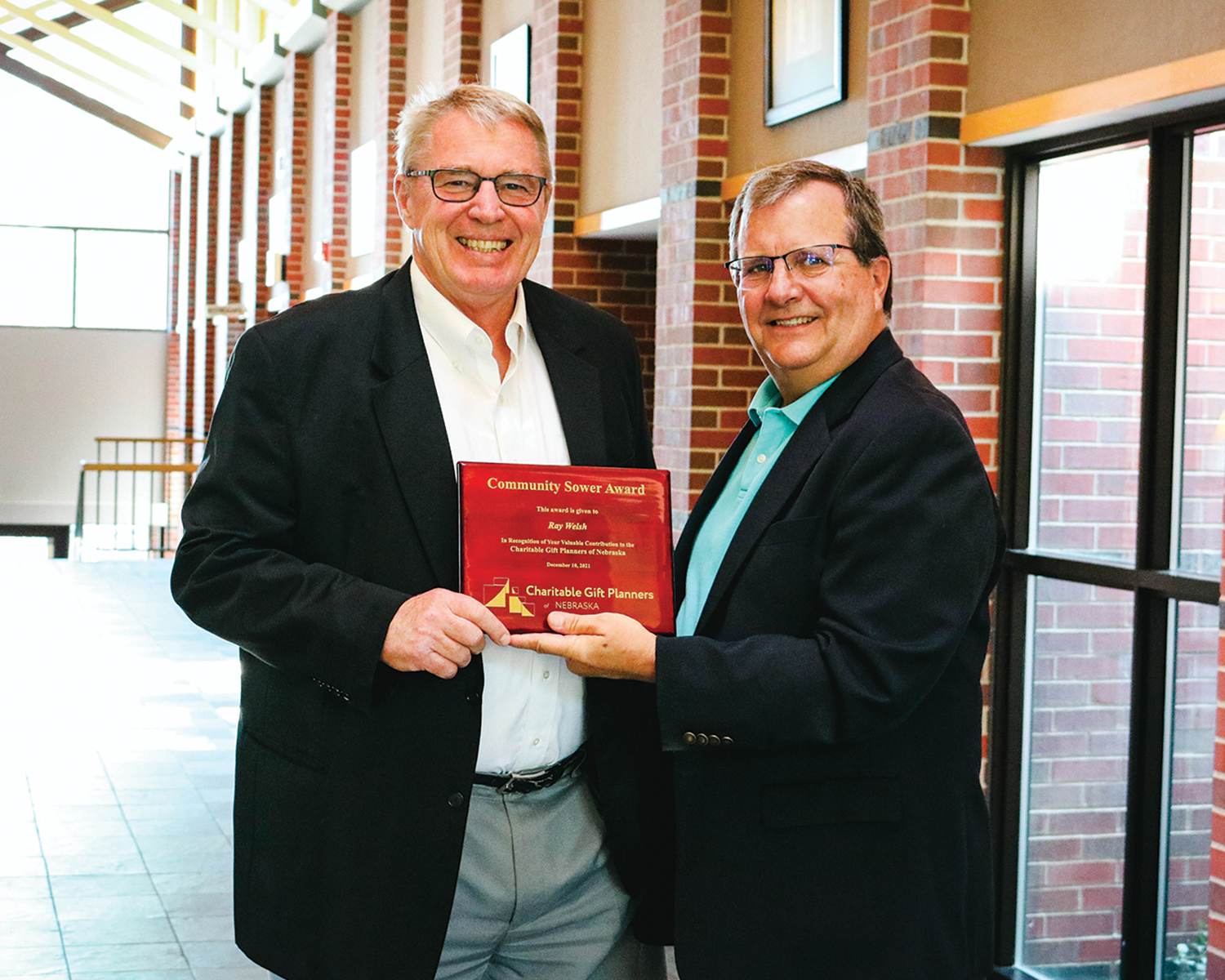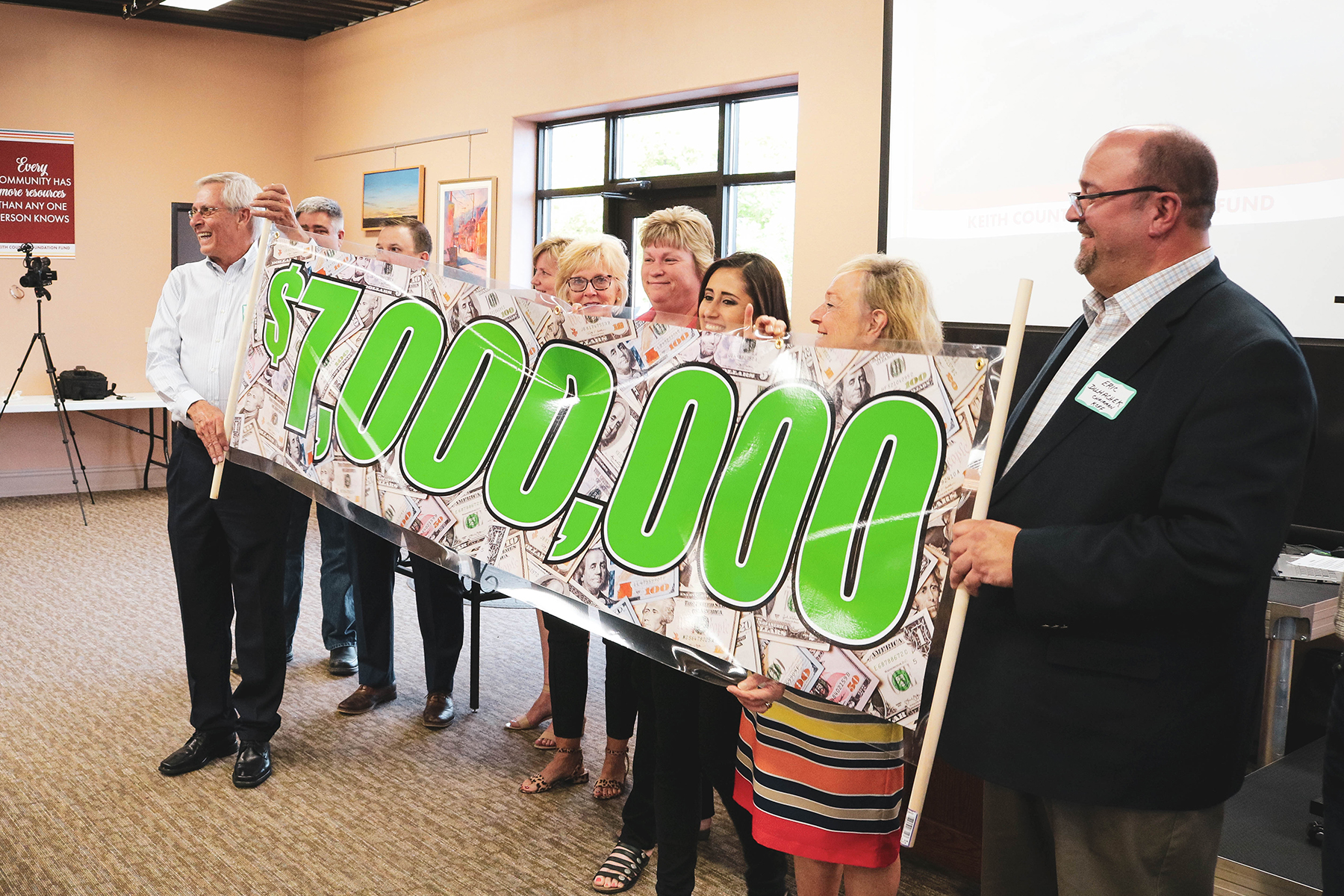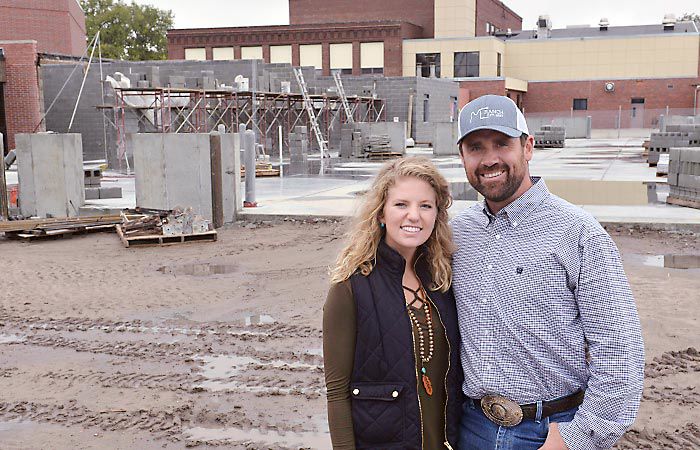A cloudy future greeted Rhonda Schuessler as she assessed the state of the world in March 2020. Here Wee Grow Child Development Center, the daycare she operates in Sidney, had recently closed its doors to protect families and staff from the novel coronavirus. Though temporary, the closure created uncertainty for families and Here Wee Grow’s 16 employees.
“What was my staff going to do, what were parents going to do,” Schuessler said. “That was my first concern.”
She wasn’t alone in feeling a sense of foreboding. The entire community reeled at the prospect of stalwart local businesses and organizations becoming secondhand casualties of the pandemic.
“I think that was everybody’s feeling, be they small businesses, restaurants, or us,” she said.
That dread wasn’t felt only in Sidney, but across Nebraska as bars, restaurants, nursing homes, and schools closed their doors. Fortunately, residents weren’t willing to stand on the sidelines while their neighbors struggled. Echoing the grassroots response to 2019’s devastating floods, Nebraskans banded together to ensure their communities could withstand the onslaught of COVID-19.
Nebraska Community Foundation volunteers were among those big-hearted residents. Established more than 25 years ago, the NCF network built its strong foundation and resilient ties to empower community growth, not respond to a worldwide pandemic. But those connections proved strong enough to withstand the test, enabling volunteers to provide support as their communities came to terms with a tumultuous period.
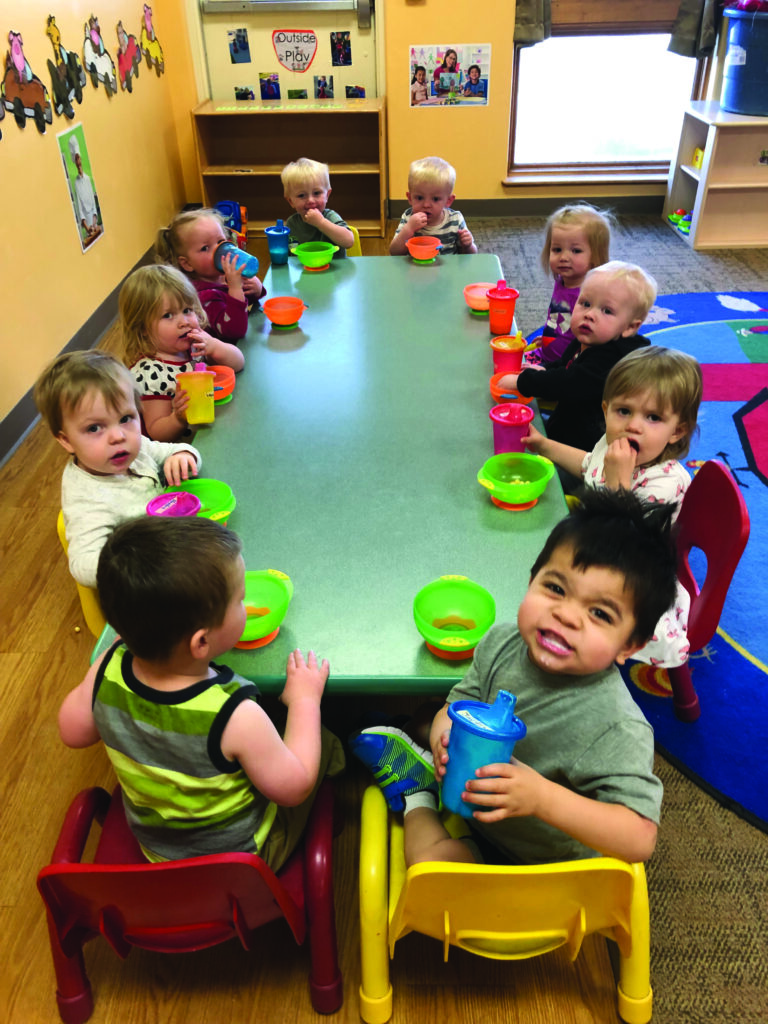
Here Wee Grow Child Development Center | Sidney, Nebraska
PROVIDING FOR PROVIDERS
Early childhood education providers faced looming financial ruin as health measures enacted to halt the virus’ spread led to increased caution among families throughout the state. In a Buffet Early Childhood Institute survey of childcare providers administered in the early days of the pandemic, 80% of providers said families decided to keep children at home in response to COVID-19, leading many in the field to anticipate reduced income. Some providers said they could not survive an extended closure, with many saying they would be unable to make their next mortgage or rent payment.
The NCF network’s propensity for community care meant providers in many places had volunteers and neighbors for support. The Sidney Community Donor-Advised Fund granted more than $184,000 to local childcare providers in May. For Schuessler, the donation exemplified the caring spirit of the community – and may have been the difference between a temporary setback and a permanent loss.
“Our small town works together and supports each other,” Schuessler said. “Those bonds hold us together right now.”
Research shows early childhood care plays an outsized role in individual and community health. The aftermath of widespread closures could be felt for decades. Programs can determine student success down the line, with high-quality curriculum correlating with higher graduation rates and reduced grade retention. The CDC also indicates early childcare plays a role in building stronger communities by reducing crime, child abuse, and neglect, as well as fostering economic growth through higher earnings potential, health care cost reduction, and more.
“It would have so many ripple effects. I don’t even know if we can estimate it.”
– Lisa Roy | Buffett Early Childhood Institute
“The early years are important because 80% of brain development happens in the first 3 to 5 years of life,” said Lisa Roy, director of program development at the Buffett Early Childhood Institute. “We also know that those years lay the foundation for how children continue to learn and grow and thrive, both academically and socially-emotionally.”
The gift from the Sidney Donor-Advised Fund—along with federal CARES Act funding—kept Here Wee Grow aloft through the spring, making it possible to keep up with expenses and pay wages for the center’s employees through the closure. In a community the size of Sidney, the loss of a childcare center would have an almost indeterminable impact on almost every resident in some way.
“It would have so many ripple effects,” Roy said. “I don’t even know if we can estimate it.”
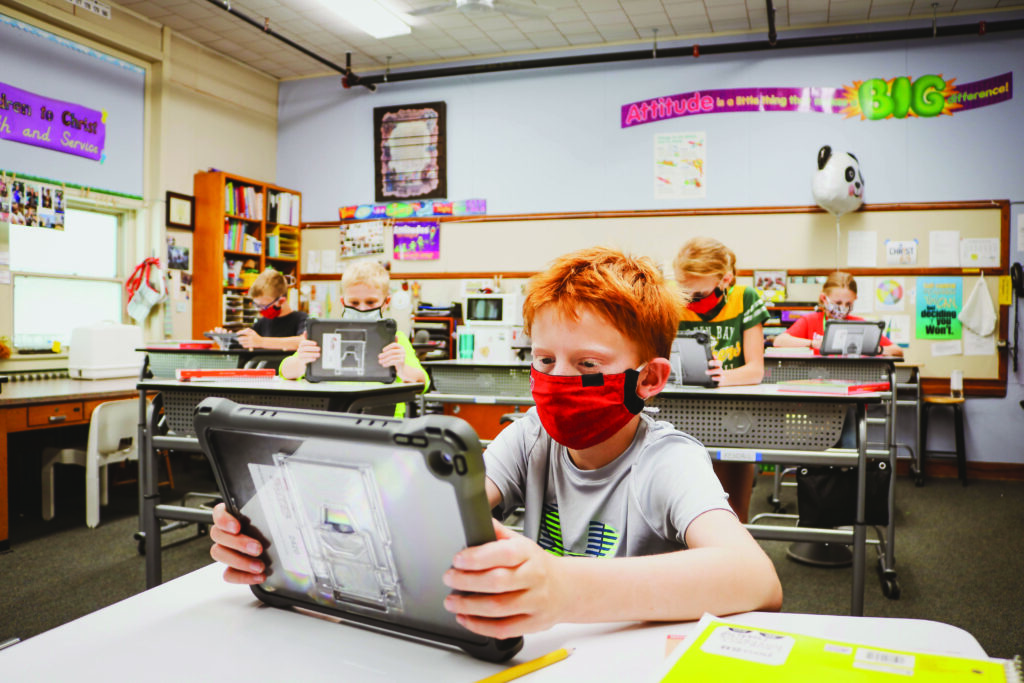
St Vincent De Paul Catholic School | Seward, Nebraska
BRIDGING THE LEARNING GAP
Nebraska schools’ first significant brush with COVID-19 came on the court. In a mid-March bid to prevent community spread, the Nebraska State Activities Association limited attendance at the boys basketball state tournament in Lincoln. At a time when Pinnacle Bank Arena would normally have been filled with cheering spectators, players instead competed for a small crowd of their immediate family members. Days after the tournament’s resolution, the state recommended schools close for six to eight weeks. By late March, districts received new recommendations to remain remote through the rest of the school year. With those changes, Nebraskans had their first sustained glimpse of the new normal – and the challenges it would bring.
The move to virtual learning left communities on unsure footing in seldom-traveled territory. COVID-19 laid bare the increasing digital divide between students from high- and low-income families. In the absence of measures to bring parity to the playing field, students who lacked access to high-speed internet or equipment risked falling behind their peers.
“During last spring’s closing of school, 15% of our students did not have devices to engage in a digital learning environment with their instructors,” said Auburn Public Schools Director of School Improvement and Curriculum Suzanne Whisler. “Those students were at a considerable disadvantage compared to their peers who were able to participate in virtual learning.”
Empathetic neighbors and leaders, including the many volunteers and donors in the NCF network, took heed of local students’ struggles. Nebraska Community Foundation and an anonymous donor worked alongside the Alice DeVoe Donor-Advised Fund to create an avenue for communities to help local schools. The collaboration resulted in a funding opportunity —Bridging the Learning Gap—that invested almost $1.2 million in 51 school districts in the spring and fall, empowering volunteers to assist their local districts with computer equipment, software, and internet access. The opportunity for funding was made available exclusively to affiliated funds in the NCF network and required a local funding match.
To support the district’s initiative to reduce disadvantages among students, Auburn administrators used the funds they received through the opportunity to furnish every high school student with proper equipment for distance learning.
“The purchase and dissemination of the Chromebooks will help ensure all high school students will have the ability to access educational opportunities digitally 24/7 while school is in session and in the event of a temporary closure as well,” Whisler said.
With its $5,000 grant, Brown County Community Foundation Fund helped finance a summer program to help Ainsworth Public Schools students complete unfinished learning. Superintendent Dale Hafer said the funds made it possible for the district to hire extra staff to serve students through the summer.
“To truly address learning gaps, students in need require more individual attention which can only be provided by hiring more teachers and paraprofessionals to work directly with those students,” Hafer said. “The funds we received from Nebraska Community Foundation and our local Brown County Community Foundation Fund allowed us to run our summer programs with additional staff that we would not have done under normal circumstances. The additional funds made our jobs to identify and meet student needs much easier and is very appreciated.”
ADDRESSING INVISIBLE NEEDS
As schools geared up for a return to in-person learning in August, NCF and its partners offered another round of the funding opportunity. The requests this time broadened in scope. The grants would still assist schools and students in adapting to a new world of learning, but there were increases in applications to direct funding toward mental health services, community health, and professional development.
“The first round of applications was highly focused on putting devices in the hands of students as they made the transition to remote learning,” said Jeff Yost, president and CEO of Nebraska Community Foundation. “In round two, we saw a notable increase in applications aimed at providing mental health resources and efforts to support unfinished learning as a result of classrooms going virtual.”
Two affiliated funds in Thayer County—Hebron Community Foundation Fund and Foundation for Thayer County Health Services Fund—applied for grants to dramatically expand the scope of mental health services in area schools. The two funds received a combined $40,000 to launch a behavioral health program designed to address often unseen needs among students.
Across the United States, rural areas are more likely to experience a shortage of professional assistance, according to the CDC, with 61% of areas reporting mental health professional shortages being rural or partially rural. That was before a pandemic upended the lives of students. Deficiencies associated with behavioral healthcare shortages and a substantial broadband rural-urban broadband gap compounded as the coronavirus made telehealth increasingly more important to everyday life.
The situation in Thayer County mirrors much of rural America. There are limited mental health services available for the county’s three school districts, FTCHSF wrote in its grant application. The hospital does provide therapy programs through a third-party contractor, but the services are limited to adults 65 or older. Getting the proper care to the younger population is a priority for the county.
“There was a need for behavioral health services before COVID,” said Rita Luongo, a member of both HCFF and FTCHSF. “I think there will be even more now.”
The funding will allow Thayer County Health Services to hire a behavioral health professional to undertake a variety of roles in serving the communities in Thayer County, including training school staff, providing resources, and working with families to pinpoint needs. In the grant application, the funds estimated the new professional will spend most of their time providing services for school age students, their family members, and staff at the schools. During the remaining time, they will provide services for other adults in Thayer County who have moved on from school.
“There was a need for behavioral health services before COVID. I think there will be even more now.”
– Rita Luongo | Hebron Community Foundation Fund
The applications also provide for the grants to help provide financial assistance to families who may not be able to afford the services otherwise.
“We don’t want cost to be a deterrent for people looking to seek services,” Luongo said.
The Bridging the Learning Gap funds helped Thayer County Health Services bear the brunt of the initial startup cost, and the hospital budgeted the necessary funds to sustain the program into the future. An April 2020 American Psychological Association report argued that grassroots, community-led movements must meet mental health infrastructure needs until system-wide change occurs. Affiliated fund leaders across Nebraska are among those nationwide preparing for the future from the ground up.
“When you look at healthcare and what areas are growing, I see behavioral health growing,” Luongo said. “It’s not going away. There’s going to be more of a need. I think being proactive is vital to having a healthy community.”
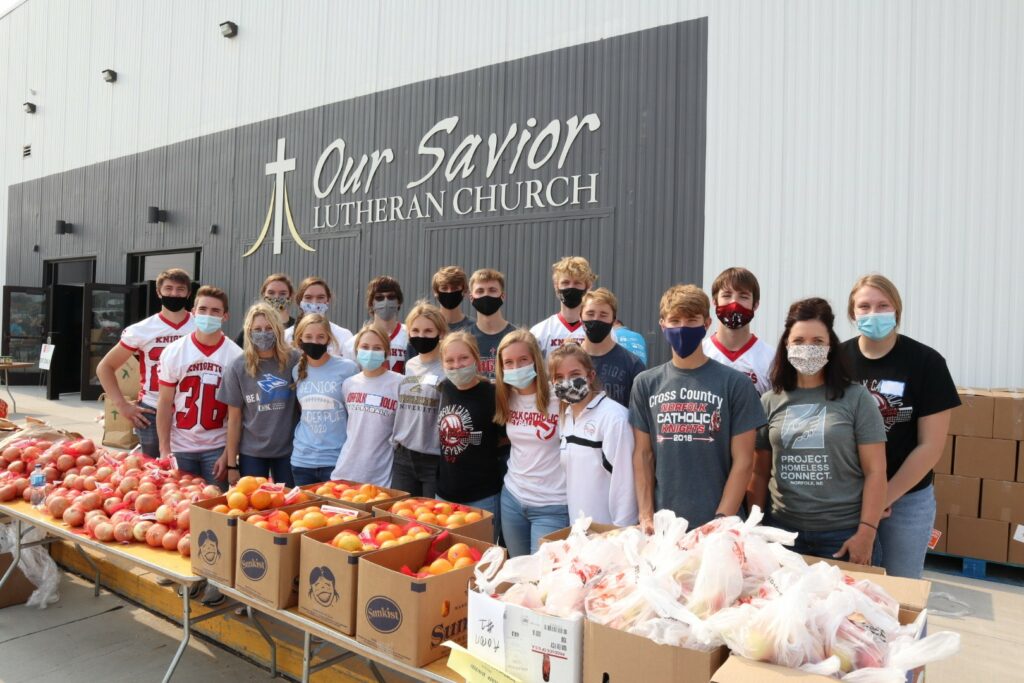
Project Homeless Connect event | Norfolk, Nebraska
MAKING CONNECTIONS
Before the world’s rapid familiarity with quarantines, masks, and video meetings, organizers of Norfolk’s Project Homeless Connect scheduled their annual event for June 26, a date that didn’t seem safe once the pandemic began closing schools, businesses, and bars. They moved the event to October with the expectation of a turnout larger than the 400-person normal, eager to help as many people as possible find their footing in a world of continual challenges.
The annual one-day event provides individuals with essential services, including dental, medical, and behavioral health care at no cost. The venture began in California in 2004, eventually taking root in multiple cities internationally. Organizers in Norfolk sought to bring the program to northeast Nebraska in 2016 and hosted their inaugural event in 2017, joining efforts in Omaha, Lincoln, Grand Island, Scottsbluff, and Hastings.
The event was more vital than ever in the wake of COVID-19. In rural areas like Greater Nebraska, limited access to services, resources, and shelters exacerbates perennial concerns among those experiencing homelessness, according to the Nebraska Commission on Housing and Homelessness. Outreach programs are also not as widespread outside of metropolitan areas. Project Homeless Connect aims to fulfill at least some of those needs.
Upon arriving at the event, guests are paired with a trained volunteer navigator who learns which services they hope to receive during the day. The navigator then guides them through multiple on-site providers for immediate assistance. Organizers pride themselves on hosting an event where attendees aren’t given a brochure and sent on their way.
“We are not your typical health fair,” said Coordinator Lacy Kimes. “We’re truly a service event. Everyone that comes into Project Homeless Connect will receive immediate services. We’re not only an information event.”
Assistance doesn’t end once guests walk out the door. Attendees leave the event with groceries and a personalized action plan that includes follow-up appointments. Organizers also arrange transportation for those with no means of their own.
“They continue to move forward even after they leave Project Homeless Connect,” Kimes said.
Volunteers with the Norfolk Area Community Foundation Fund recognized the increased need for the event and partnered with Our Savior Lutheran Church to award $4,000 to PHC, alongside donations to a handful of other area non-profits. With the expected boost in attendees this year, additional funding is appreciated.
“We are anticipating a larger crowd, which means we’re going to need more supplies,” Kimes said. “[The gift] is going to have a huge effect on services we supply that day.”
“We’re recognizing that more people need more help. If we can step up to the plate and help our neighbors, that’s what we need to do.”
Lacy Kimes | Project Homeless Connect
The generosity shown by NACFF, Our Savior, and the numerous volunteers who work the event each year is emblematic of the community’s commitment to caring for neighbors, Kimes said. They do have concerns about the virus, but they believe stepping away would be a disservice to those hit hardest by the pandemic. They will be implementing social distancing measures and adhering to health directives throughout the event.
“We’re not ignoring that the virus is out there and that this is a really scary time,” Kimes said. “We’re recognizing that more people need more help. If we can step up to the plate and help our neighbors, that’s what we need to do.”
GIVING A BOOST
The threat of permanent closure loomed over businesses throughout Greater Nebraska, much like the rest of the county. A national survey of small businesses published in the Proceedings of the National Academy of Science found that 43% of businesses temporarily closed in March, along with a 40% decline in employment. Such figures cast a long shadow over local entrepreneurs.
Volunteers in the NCF network developed creative ways of supporting their local businesses, with the most popular being a makeshift stimulus program to deliver an economic boost to a depressed community. The Stratton Community Foundation Fund advisory committee created its own stimulus program – modeled after a similar effort by the McCook Community Foundation Fund – that aimed to support local businesses facing hard times. The program offered community members an opportunity to purchase Stratton COVID Cash certificates with an incentive to receive bonus funds for $50 or $100 purchases. Residents could purchase up to $500 in certificates to be redeemed at participating local businesses.
“The goal was to promote local businesses while also helping the people of our community,” said FAC Member Lorrinda Cheatham.
“I’m proud of the fact we can help out local families and businesses when so many are hurting right now.”
– Lorrinda Cheatham | Stratton Community Foundation Fund
The fund’s newly established COVID-19 response account made the stimulus program possible, Cheatham said. The fund received a $5,000 donation from MNB Bank and then $5,000 more from the Graff Charitable Foundation. McCook Community Foundation Fund also used its COVID-19 response account to kickstart its stimulus program, which sold out of certificates in a matter of weeks and injected $120,000 into the local economy.
Volunteers in Stratton empowered residents to support their local businesses during a time of significant trouble. To see the community band together in the face of uncertainty was a welcome dose of positivity.
“It feels amazing,” Cheatham said. “I’m proud of the fact we can help out local families and businesses when so many are hurting right now.”
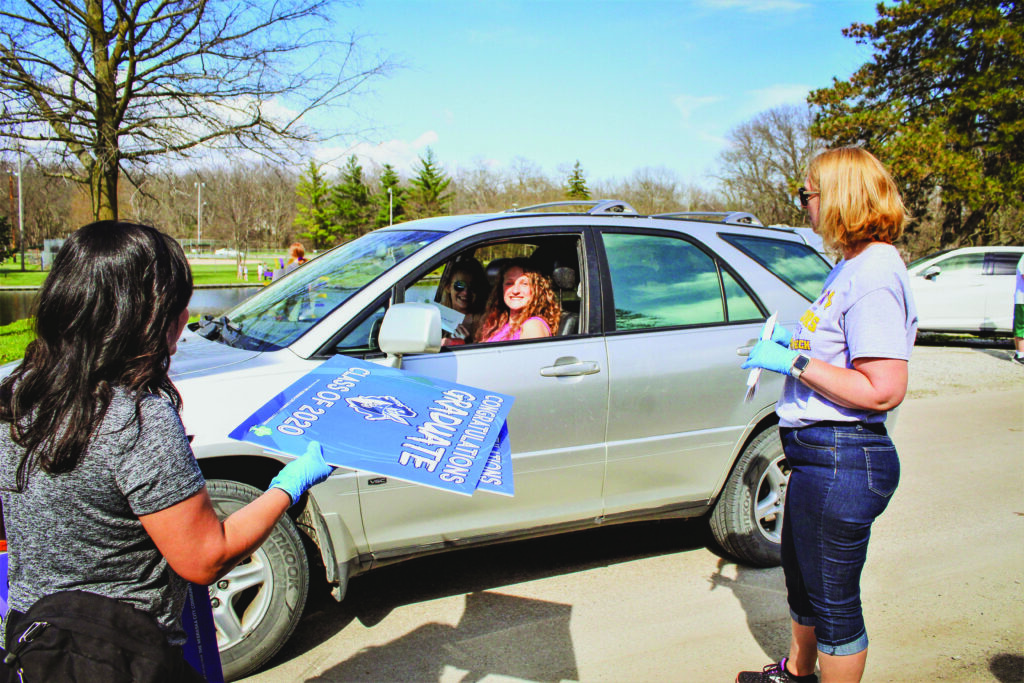
Nebraska City, Nebraska
PREPARING FOR THE FUTURE
The Nebraska Community Foundation’s network may have been built decades ago in calmer times, but it proved indispensable in a climate few could have predicted. In 2019, Yost asked readers of his regular statewide newspaper columns to think of all the ways their community evolved in the past 20 years and to imagine just how fast things the world might change through the next two decades. Preparing for an unpredictable future can be difficult, but the NCF network’s path proved resilient.
“Nebraska Community Foundation’s answer to this question is simple: build an unrestricted endowment for your hometown,” Yost wrote. “Flexible, locally controlled opportunity capital that can be used to foment positive change – the kind of change that may otherwise not occur. The kind of change that cannot be anticipated today.”
Like a community savings account, unrestricted endowments are an important tool to keep hometowns across Nebraska growing. While a portion of the income earned by an unrestricted endowment is granted annually to fund projects and programs to benefit the community, the principal remains intact and grows every year.
Unrestricted endowments made it possible for communities across the state to extend aid to institutions in need as the pandemic settled in Nebraska. Some affiliated funds used endowment payouts to bridge the learning gap, others used it to connect families to loved ones in nursing facilities and others used the money to boost other local organizations who feed and shelter those in need.
“I cannot be more thankful. Those donations are the wings that are carrying us right now.”
– Rhonda Schuessler | Here Wee Grow Child Development Center
The pandemic threatened Nebraska hometowns with devastating consequences for all residents. For Schuessler and others, charitable donations and government assistance were an essential lifeline. Here Wee Grow closed for 10 weeks in the spring, but the threat of permanently shuttered doors still loomed as the pandemic stretched into fall. With a caring community at the ready, Schuessler feels comfort in knowing she can continue serving area families as an uncertain year continues to move ahead.
“These children are our passion,” she said. “Our families are so thankful we are available.”
She’s grateful to her local affiliated fund for offering a hand when she needed it most.
“I cannot be more thankful,” Schuessler said. “Those donations are the wings that are carrying us right now. It allows us to continue to build a greater Nebraska and make a positive difference in our community.”

